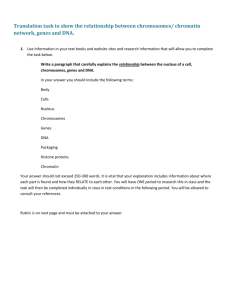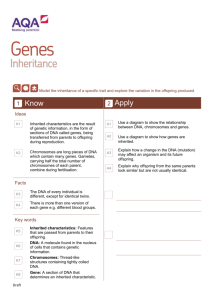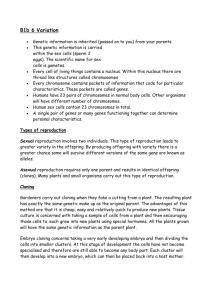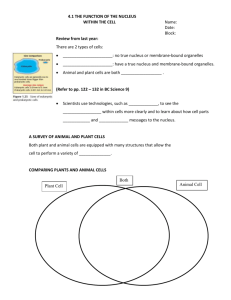Genetic Material Quiz
advertisement
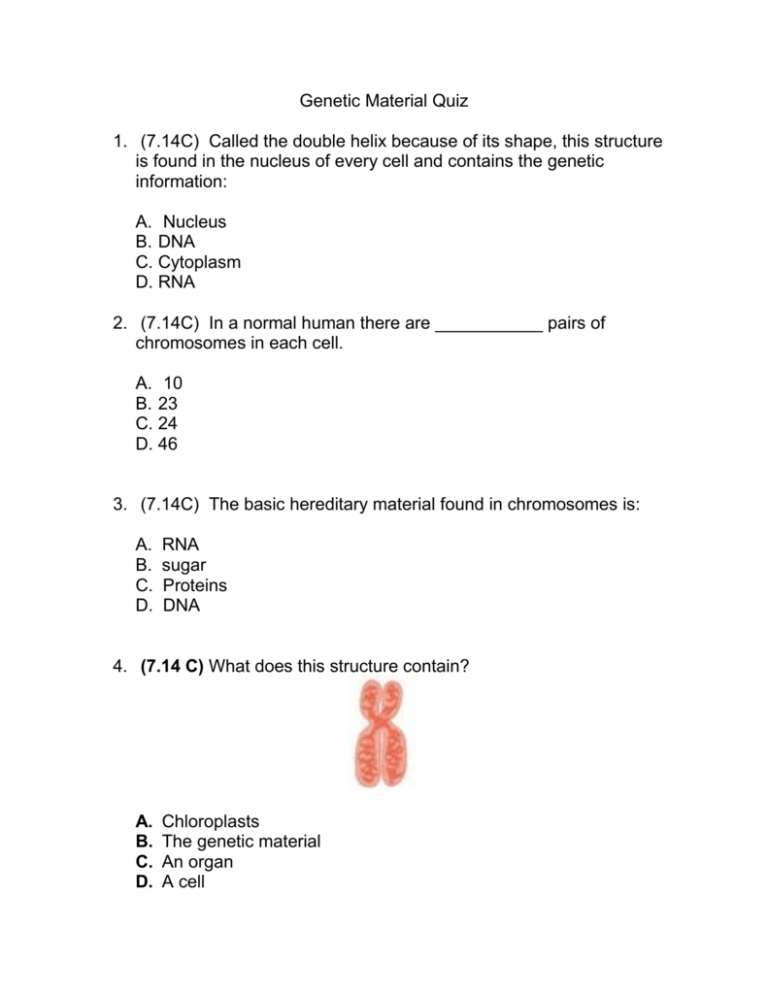
Genetic Material Quiz 1. (7.14C) Called the double helix because of its shape, this structure is found in the nucleus of every cell and contains the genetic information: A. Nucleus B. DNA C. Cytoplasm D. RNA 2. (7.14C) In a normal human there are ___________ pairs of chromosomes in each cell. A. 10 B. 23 C. 24 D. 46 3. (7.14C) The basic hereditary material found in chromosomes is: A. B. C. D. RNA sugar Proteins DNA 4. (7.14 C) What does this structure contain? A. B. C. D. Chloroplasts The genetic material An organ A cell 5. (7.14 C) Genes are found A. in all cells B. in the nucleus of cells C. on chromosomes D. all of these 6. (7.14 C) When looking under a microscope, which individual unit would you be able to identify first when moving from low to high magnification? A. a gene B. a chromosome C. a nucleus D. all of these would be visible at the same time 7. (7.14 C) Most cats have 5 toes on each foot, but every once in a while, a kitten will be born with 6 toes on each foot. Other kittens in the same litter will have only 5 toes on each foot. A change in which of the following most likely caused 6 toes in cats? A. Food B. Water C. Nesting sites D. Genetic material 8. (7.14 C) Which of the following is the correct organization of genetic material from smallest to largest? A. DNA, genes, chromosomes, Nucleus, cell B. Genes, chromosomes, DNA, cell, nucleus C. Cell, nucleus, genes, DNA, chromosomes D. Chromosomes, DNA, cell, nucleus, genes 9. (7.14 C) Pictured above is A. An illustration of centrifugal force B. a freeway system C. DNA which carries the genetic instructions D. A type of cell 10. (7.4 A) The magnification of the eyepiece on a compound microscope is 10X. The magnification of the objective lens is 100X. What is the total magnification? A. 10X B. 100X C. 110X D. 1,000X

